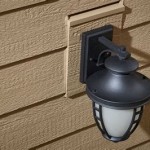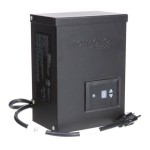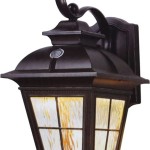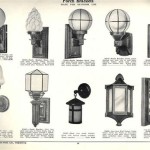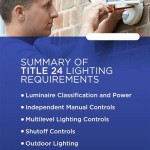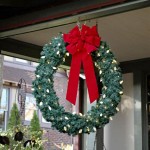Choosing the Right Light Bulbs for Outdoor Lights
Selecting the appropriate light bulbs for outdoor lighting fixtures is a crucial decision that impacts not only the aesthetic appeal of a property but also its security, energy consumption, and overall safety. The market offers a diverse range of bulb types, each with distinct characteristics that cater to different needs and preferences. Understanding these characteristics is essential in making an informed decision.
Outdoor lighting serves multiple purposes. It enhances curb appeal, making a home or business more inviting and visually appealing, especially during the evening and at night. Strategically placed lights can illuminate walkways, driveways, and entrances, increasing safety by preventing trips and falls. Well-lit outdoor areas can deter criminal activity, providing an added layer of security. Furthermore, outdoor lighting can be used to highlight landscaping features, creating a pleasant ambiance for outdoor gatherings and relaxation.
When choosing light bulbs for outdoor lights, several factors must be considered. These include the type of fixture, the desired level of brightness, energy efficiency considerations, the color temperature of the light, and the bulb's resistance to weather elements. Neglecting these factors can lead to suboptimal performance, increased energy costs, and even potential safety hazards.
Understanding Different Types of Light Bulbs
The evolution of lighting technology has resulted in a varied selection of light bulb options, each with unique advantages and disadvantages. Understanding the nuances of each type is paramount to making the right choice for outdoor lighting applications.
Incandescent Bulbs: Incandescent bulbs, the traditional type of lighting, produce light by heating a filament until it glows. While they offer a warm, inviting light, they are notoriously inefficient, converting only a small percentage of their energy into light, with the rest emitted as heat. This inefficiency translates to higher energy bills and a shorter lifespan compared to other bulb types. Due to their energy inefficiency, incandescent bulbs are being phased out in many regions. Their primary advantage lies in their low initial cost and dimming capabilities.
Halogen Bulbs: Halogen bulbs are an improved version of incandescent technology. They also use a heated filament, but the gas inside the bulb allows the filament to burn brighter and hotter, resulting in a higher light output and a slightly longer lifespan than traditional incandescent bulbs. Halogen bulbs are still less energy-efficient than newer technologies such as LEDs, producing a substantial amount of heat. They are often used in floodlights and security lights due to their brightness.
Compact Fluorescent Lamps (CFLs): CFLs are significantly more energy-efficient than incandescent and halogen bulbs. They produce light by passing an electric current through a gas-filled tube, causing it to emit ultraviolet light, which then excites a phosphor coating on the inside of the tube, producing visible light. CFLs use approximately 75% less energy than incandescent bulbs and last significantly longer. They are available in various shapes and sizes, making them suitable for a wide range of outdoor fixtures. However, CFLs contain a small amount of mercury, requiring careful disposal. Their light quality can also be less desirable for some users, with a cooler tone than incandescent bulbs.
Light-Emitting Diodes (LEDs): LEDs represent the most advanced and energy-efficient lighting technology currently available. An LED is a semiconductor device that emits light when an electric current passes through it. LEDs are extremely energy-efficient, using up to 80% less energy than incandescent bulbs and lasting significantly longer. They are also more durable and resistant to shock and vibration compared to other bulb types. LEDs are available in a wide range of colors and color temperatures, providing flexibility in achieving the desired lighting effect. While the initial cost of LEDs may be higher, their long lifespan and energy savings make them a cost-effective choice in the long run. They also do not contain any harmful substances, making them environmentally friendly.
Key Considerations for Outdoor Bulb Selection
Choosing the correct light bulb for outdoor use involves a careful assessment of several crucial factors beyond merely the bulb type.
Brightness (Lumens): Brightness is measured in lumens, not watts. Watts measure energy consumption, while lumens measure the amount of visible light emitted by a bulb. For outdoor lighting, the required brightness depends on the intended purpose. For pathway lighting, a lower lumen output may be sufficient, while security lighting may require a higher lumen output. Consider the size of the area to be illuminated and the surrounding environment when selecting the appropriate lumen rating. It is often better to choose a bulb with a slightly higher lumen output and use a dimmer if needed.
Color Temperature (Kelvin): Color temperature is measured in Kelvin (K) and describes the warmth or coolness of the light emitted by a bulb. Lower Kelvin values (e.g., 2700K) produce a warm, yellowish light, similar to incandescent bulbs. Higher Kelvin values (e.g., 5000K) produce a cool, bluish-white light, similar to daylight. For outdoor lighting, a warm color temperature is often preferred for creating a welcoming and inviting ambiance. A cooler color temperature may be more suitable for security lighting, as it provides better visibility. Experimenting with different color temperatures can help determine the best option for specific needs.
Weather Resistance: Outdoor light bulbs must be able to withstand the elements. Look for bulbs that are rated for outdoor use and are resistant to moisture, humidity, and extreme temperatures. Consider the specific climate of the region when selecting bulbs. In areas with harsh winters, bulbs that are designed to operate in cold temperatures are essential. In areas with high humidity, bulbs that are resistant to moisture damage are crucial. Some bulbs come with a protective coating to further enhance their weather resistance.
Fixture Compatibility: Ensure that the selected light bulb is compatible with the outdoor lighting fixture. Consider the base type, size, and shape of the bulb. Some fixtures may require specific bulb types due to design constraints. Refer to the fixture's user manual or consult with a lighting specialist to ensure compatibility. Using an incompatible bulb can damage the fixture or the bulb itself.
Specific Applications and Bulb Recommendations
The ideal choice of outdoor light bulb often depends heavily on the specific application and the desired outcome. Different areas around a property require different lighting solutions.
Porch Lights: Porch lights are primarily used for creating a welcoming entrance and enhancing security. Warm-toned LED bulbs (2700K-3000K) with a moderate lumen output (400-800 lumens) are often a good choice. These bulbs provide a pleasant light without being overly bright. Consider using a dusk-to-dawn sensor to automatically turn the lights on at sunset and off at sunrise.
Pathway Lights: Pathway lights are essential for safety, guiding pedestrians along walkways and preventing accidents. Low-wattage LED bulbs (1-3 watts) with a warm color temperature (2700K-3000K) are ideal for pathway lighting. These bulbs provide sufficient illumination without creating glare. Consider using solar-powered pathway lights for added energy efficiency.
Floodlights: Floodlights are typically used for security purposes, illuminating large areas and deterring criminal activity. High-lumen LED bulbs (1000-2000 lumens) with a cool color temperature (4000K-5000K) are recommended for floodlights. These bulbs provide bright, clear light that enhances visibility. Consider using motion-activated floodlights for added security and energy savings.
Landscape Lighting: Landscape lighting highlights architectural features and landscaping elements, enhancing the aesthetic appeal of a property. Low-voltage LED bulbs with a variety of color temperatures and beam angles can be used for landscape lighting. Warm-toned bulbs can be used to highlight trees and shrubs, while cooler-toned bulbs can be used to illuminate water features. Experimenting with different lighting techniques can create a dramatic and visually appealing effect.
String Lights: String lights add a festive and decorative touch to outdoor spaces. LED string lights are the most energy-efficient and durable option. They are available in a wide range of colors and styles. Consider using solar-powered string lights for added convenience and energy savings.
Making informed lighting choices can significantly enhance the safety, security, and aesthetic appeal of any outdoor space while potentially reducing energy consumption and minimizing environmental impact. Understanding the characteristics of different bulb types and considering the specific needs of each application is key to achieving optimal results.

Outdoor G40 String Lights Festive Patio And Garden Lighting Chronos

Best Outdoor Lighting Bulbs Of 2024

Daybetter 100ft Outdoor String Lights For Outside G40 Patio With 50 Edison Vintage Bulbs Waterproof Connectable Hanging Garden Backyard Porch Balcony Party Com

How To Choose The Best Outdoor String Lights

Landscape Lighting Installation Companies Types Of Light Bulbs For Outdoor Orlando Florida Palmer Electric Company

Newhouse Lighting Outdoor Indoor 25 Ft Plug In Globe Bulb String Lights With 27 Socket Big Led G50 Bulbs 2 Free Large Included Pstringled25g50 The Home Depot

Pin On L O F T

Better Homes Gardens 20 Count Clear Glass Globe G40 Bulbs Outdoor String Lights Com

Solar G40 10m String Light With 20 Bulbs Outdoor Waterproof Bulb Lights 220v Vintage Led For Patio Home Garden Decor Lazada

Hanging Clip Solar Powered Led Light Bulbs Warm Outdoor Garden Camping Lamp
Related Posts
